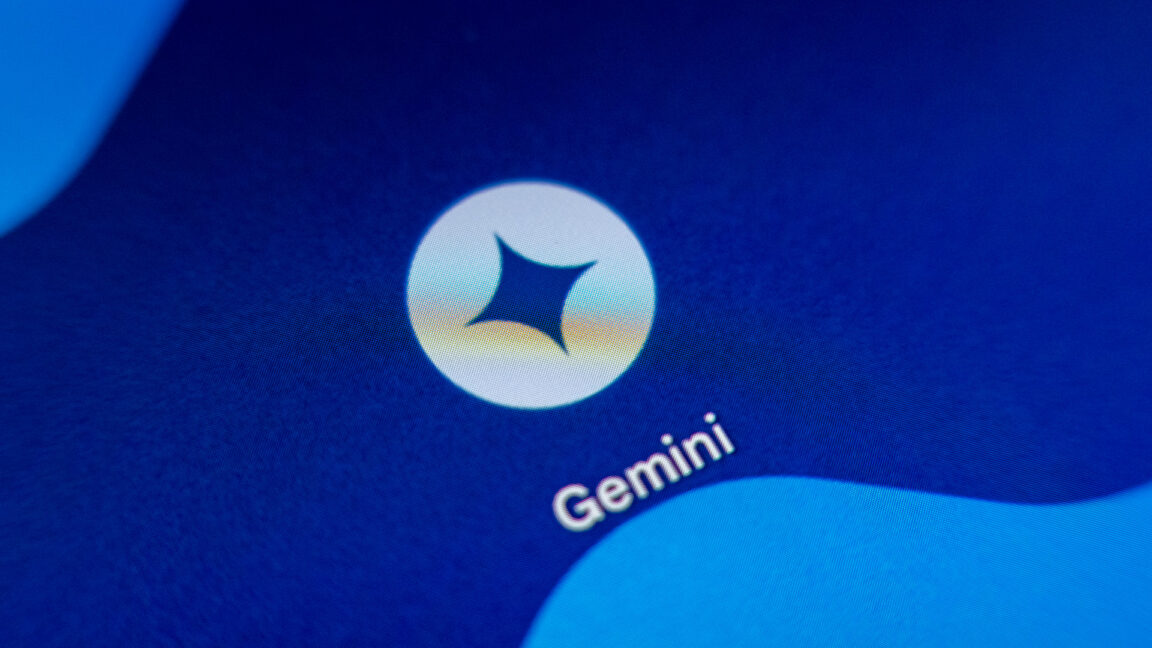Best builds in Clair Obscur Expedition 33
Table of Contents
Table of Contents
Best Gustave build
Best Lune build
Best Maelle build
Best Sciel build
Best Verso build
Best Monoco build
Throughout your Clair Obscur: Expedition 33 playthrough, you’ll have control over six different party members. Each character has a unique combat style and special skills that you must organize in a certain way to make combat successful.
With only six skill slots and a bevy of Pictos and Luminas to choose from, finding the right build for your party members can start to feel like a hefty task. If you’re unsure what the best builds are for each character in Clair Obscur: Expedition 33, here are our recommendations based on plenty of gameplay experience.
Recommended Videos
Sandfall Interactive
Best skills
Lumiere Assault
Overcharge
Powerful
Marking Shot
From Fire
Strike Storm
The ultimate goal with Gustave is to reach maximum power with his Overcharge ability. You can gain charges each turn by dealing damage, dodging, parrying, and even using certain skills that grant Gustave charges. Skills like Lumiere Assault, Powerful, and Strike Storm give Gustave extra charges, which make them good skills to have. Aside from Powerful, which grants 1-3 allies the Powerful buff for three turns, Lumiere Assault and Strike Storm only give you charges with Critical Hits, so make sure Gustave’s Critical Rate score is high.
Related
It’s best to unlock Gustave’s Marking Shot skill early on, as you’ll want a party member to be able to apply Mark onto an enemy. Many other party members’ skills have benefits with Marked enemies, so even though it only deals low Lightning damage, it’s good to place a Mark on them so the next attack deals extra damage. You’ll also want at least one healing type of skill on most of your characters, so From Fire works best. It deals three medium weapon damage in three hits, and if the target Burns, Gustave heals himself by 20%. This can play off of either Lune’s or Maelle’s Fire damage skills that apply Burn, and it only costs 4 AP to use.
Then, of course, we have Overcharge, which you should wait to use until Gustave has 10/10 Charges. It can Break an enemy, meaning it will Stun them, and even if the enemy is Resistant to Lightning damage, it’s so powerful that it’ll still deal a decent amount of damage. This build is good for both early to late Act 1 and has a balance of skills that cost low AP and high AP.
Best Pictos & Luminas
As Gustave continues to level up and you unlock more and more Pictos, you’ll be swapping them out quite often. The Pictos that will most often benefit Gustave are the ones that boost his Critical Rate, Defense, and Health. Making Gustave more of a tank can help him stay up in the fight to continue gaining Charges for his Overcharge ability. Also, since many of his skills apply more Charges with Critical Hits, you’ll want his Critical Rate higher than most party members.
As for Luminas, you’ll want to think of activating ones that can help that Overcharge ability shine. Here are some Lumina options you should look out for:
Breaker: 25% increased Break damage
Dodger: Gain 1 AP on Perfect Dodge. Once per turn
Marking Shots: 20% chance to apply Mark on Free Aim shot
First Strike: Play first
Attack Lifesteal: Recover 15% Health on Base Attack
Critical Moment: 50% increased Critical Chance if Health is below 30%
Sandfall Interactive
Best skills
Immolation
Mayhem
Healing Light/Rebirth
Thermal Transfer
Elemental Trick
Rockslide
Lune is your best party member for dealing elemental damage to the enemy, especially if it’s Fire, Ice, and Earth damage. Even in mid-game fights, I’ve continued to use Immolation since it applies three Burn to the enemy and can apply two more if the target is marked. You can later replace this with Wildfire, which essentially does the same thing but more damage to all enemies. Then there’s Thermal Transfer, which works well with her Fire skills since she deals low Ice damage but gains 4 AP if the target is Burning. As for Earth skills, Rockslide is affordable on AP and has the opportunity to Break the enemy.
I use Lune to either heal or revive my party members without Healing/Revive Tints, so I swap between Healing Light to heal and dispel Status Effects and Rebirth, which can revive and heal. Your choice of skill depends on whether you’re going into a fight where you know your party is at risk of death. Elemental Trick is good for figuring out an enemy’s weakness since it deals Ice, Fire, Lightning, and Earth damage, but only if the enemy is weak to any of those four.
Mayhem is Lune’s best skill that only costs 3 AP. It consumes all of her Stains to deal high elemental damage, and if she consumes all four Stains, it can break the enemy. It’s a super powerful skill that you should unlock early on, and it’ll come in clutch during all boss fights.
Best Pictos & Luminas
If you’re using Lune as a healer, you want to choose Pictos that give her high Health or Defense so she can stay alive enough turns to support her party. I’d also recommend you give her a Speed bonus, as it wouldn’t hurt to play more times during combat.
Here are the best Luminas you can give Lune:
Auto Shell: Apply Shell for 3 turns on battle start
Burning Shots: 20% chance to Burn on Free Aim shot
Critical Burn: 25% increased Critical Chance on Burning enemies.
Dodger: Gain 1 AP on Perfect Dodge. Once per turn
Energising Start: +1 AP on battle start
Staggering Attack: 50% increased Break damage on Base Attack
Sandfall Interactive
Offensive Switch/Fencer’s Flurry
Percée
Spark/Rain of Fire
Swift Stride
Breaking Rules
Fleuret Fury
When playing as Maelle, you’ll start to play in a certain order of operations to end up dealing the most damage. Start by using a move that puts her in the Offensive Stance, like Offensive Switch or Fencer’s Flurry. The former only costs 1 AP, so it’s a much cheaper option, but later on you can switch it for the latter. These two moves also debuff the enemy with Defenceless. If Lune has already applied Burn to an enemy, you can use Swift Stride to deal damage and switch to her Virtuose Stance for 200% damage, but only if the target Burns. If no one is burning, you can instead use Spark or Rain of Fire to apply Burn.
Once you’re in the Virtuose Stance, there are two good options. Percée deals medium Physical damage to one enemy and costs 5 AP, but in this stance, it only costs 2 AP. Or, you can use Fleuret Fury to deal three high Physical damage hits and stay in the Virtuose Stance for another turn.
I highly recommend having Breaking Rules as well, especially during one section of Act 1 where a certain enemy will add multiple Shields to itself. This not only deals two hits of low Physical damage, but it destroys all of the target’s Shields. Maelle also gains 1 AP per Shield destroyed. On top of that, if the target is Defenceless, she plays a second turn.
Best Pictos & Luminas
When Maelle is in the Offensive Stance, she’s more vulnerable to attacks, so giving her Pictos with high Defense is a smart move. In the same vein, it’s smart to give her some extra health so she doesn’t go down right as you get her into the Virtuose Stance.
As for Luminas, here are some great options to choose from:
Combo Attack: Base Attack has 1 extra hit
Critical Burn: 25% increased Critical Chance on Burning enemies.
SOS Shell: Apply Shell when falling below 50% Health
Dodger: Gain 1 AP on Perfect Dodge. Once per turn
Dead Energy: +3 AP on killing an enemy
Exposing Attack: Base Attack applies Defenceless for 1 turn
Sandfall Interactive
Sealed Fate
Focused Foretell
Marking Card
Rush
Harvest
Plentiful Harvest
Sciel’s combat is all about applying and consuming Foretell while also getting in her Twilight Mode for the most damage. This means you need a balance of Sun and Moon skills, as well as skills that both apply and consume. Focused Foretell and Marking Card are your two best Sun skills for applying Foretell. While the former normally applies two but applies three additional Foretell if the target starts with none, the latter deals Dark damage, applies three Foretell, and Marks the target.
To get into Twilight Mode, you can then use Moon skills like Sealed Fate. This deals high damage in five to seven hits, and each hit consumes one Foretell to deal 200% more damage. On top of that, Critical Hits don’t remove the Foretell. The fact that this move costs 4 AP is a steal. Harvest is good for dealing medium damage while also consuming Foretell to heal Sciel.
Plentiful Harvest comes in handy when your other party members are lacking in AP, since it consumes Foretell when attacking the target and gives AP to your party members. Finally, Rush is a good buff move that increases the speed of your party. This means you’ll be able to take more turns.
Best Pictos & Luminas
Giving Sciel Pictos with Critical Rate boosts works well with Sealed Fate since it increases the chances of Foretell not being consumed. It’s also good for her to have speed boosts, which make her even faster when she applies Rush on the party.
These are the Luminas I recommend you give to Sciel:
Enfeebling Mark: Marked targets deal 30% less damage
Critical Moment: 50% increased Critical Chance if Health is below 30%
Dead Energy: +3 AP on killing an enemy
Dodger: Gain 1 AP on Perfect Dodge. Once per turn
Roulette: Every hit has a 50% chance to deal either 50% or 200% of its damage
Sweet Kill: Recover 50% Health on killing an enemy
Sandfall Interactive
Quick Strike
Paradigm Shift
Marking Shot
Assault Zero
Perfect Break
Powerful
Verso’s build relies on you upgrading his rank from D to S while, along the way, using skills that take advantage of each rank. You’ll start on rank D, so use Quick Strike to deal low Physical damage. Although it doesn’t hit hard, being on D tier means it gives you more Perfection. And with more Perfection comes rank climbing. Once you’re at rank C, you can either use Paradigm Shift or Marking Shot. The former deals low Physical damage but gives one to 3 AP back, granting an extra AP on C rank. The latter deals low weapon damage but applies Mark, and increases the damage on C rank.
Once you make it to B rank, you can start to deal more damage. Assault Zero hits five times and deals more damage on rank B, while Critical Hits generate additional Perfection. Then there’s Perfect Break, which deals very high Light damage and can Break the enemy. If they break, you surge up to rank S, and at B rank, it costs 5 AP instead of 7. Verso can also boost his teammates with Powerful, which applies the Powerful buff to one to three allies. On rank A, its duration increases to five instead of three turns, but three turns is still long enough.
Best Pictos & Luminas
Since Verso needs Critical Hits to generate more Perfection with one of his skills, pick Pictos with Critical Rate boosts. Otherwise, picking Health and Defense boosts is a good idea too.
Here are some of the Luminas you should apply for Verso:
Breaker: 25% increased Break damage
Confident: Take 50% less damage, but can’t be Healed
Critical Moment: 50% increased Critical Chance if Health is below 30%
Dodger: Gain 1 AP on Perfect Dodge. Once per turn
Energising Start: +1 AP on battle start
Enfeebling Mark: Marked targets deal 30% less damage
Sandfall Interactive
Chalier Combo
Hexga Crush
Pèlerin Heal
Ramasseur Bonk
Cultist Blood
Cultist Slashes
You get Monoco much later in the game compared to the other party members, and his skills work differently since you get new skills whenever you collect a foot from a new enemy type. With this in mind, there are a lot of options for Monoco’s build, so it’s hard to go wrong with it. Chalier Combo is my only Balanced Mask (Red) move here, and it costs the most AP, but once you get enough, you can deal high Physical damage in six hits. There are two Heavy Mask (Green) skills in this build, which are Hexga Crush and Cultist Blood. The former deals medium Earth damage in two hits, and it applies the debuff Defenceless. The latter is used in tandem with another skill on this list, and it sacrifices 90% of Monoco’s health to increase damage to all enemies.
After using Cultist Blood, use Cultist Slashes, which is an Agile Mask (Purple) move that deals more damage the less health Monoco has. With barely any health left, he’ll be able to dish out incredible Dark damage. Another Agile Mask move here is Ramasseur Bonk, which deals the weakest damage, but if you’re on that Mask, you can fill 20% of the target’s Break bar to Stun them. Finally, my only Caster Mask (Blue) skill here is Pèlerin Heal, which applies Regen to all allies. If it’s on that Mask, it also Heals allies by 40%. These skills give Monoco a balance of offensive and defensive capabilities.
Best Pictos & Luminas
Since Monoco sacrifices Health for damage with some of his skills, give him a boost of Health and Defense on his Pictos. This way, he has a better chance of staying alive at such low health.
These are the Luminas you should consider giving to Monoco:
Breaker: 25% increased Break damage
Dodger: Gain 1 AP on Perfect Dodge. Once per turn
Critical Moment: 50% increased Critical Chance if Health is below 30%
At Death’s Door: Deal 50% more damage if Health is below 10%
Dead Energy: +3 AP on killing an enemy
SOS Power: Apply Powerful when falling below 50% Health
Editors’ Recommendations











